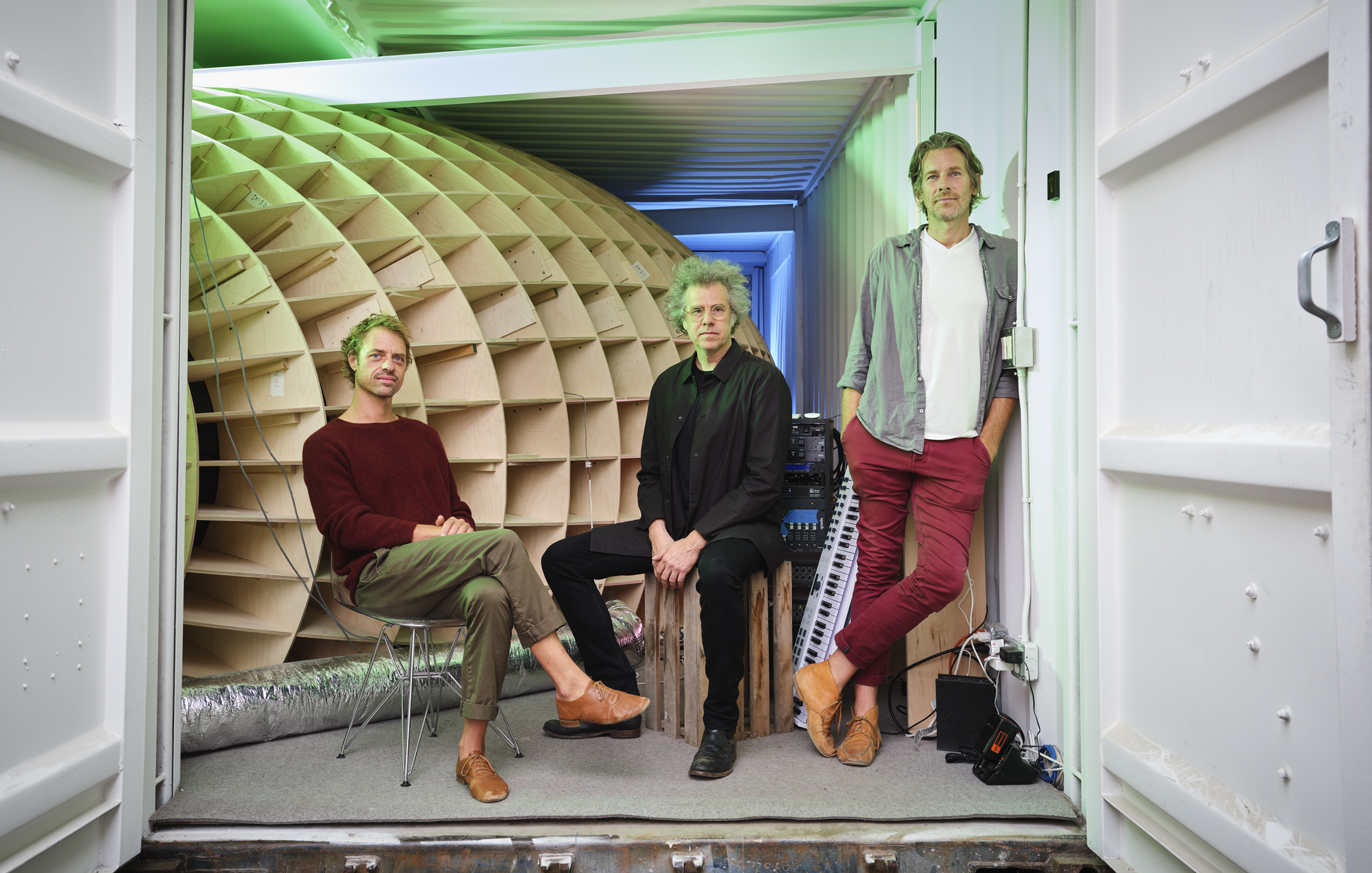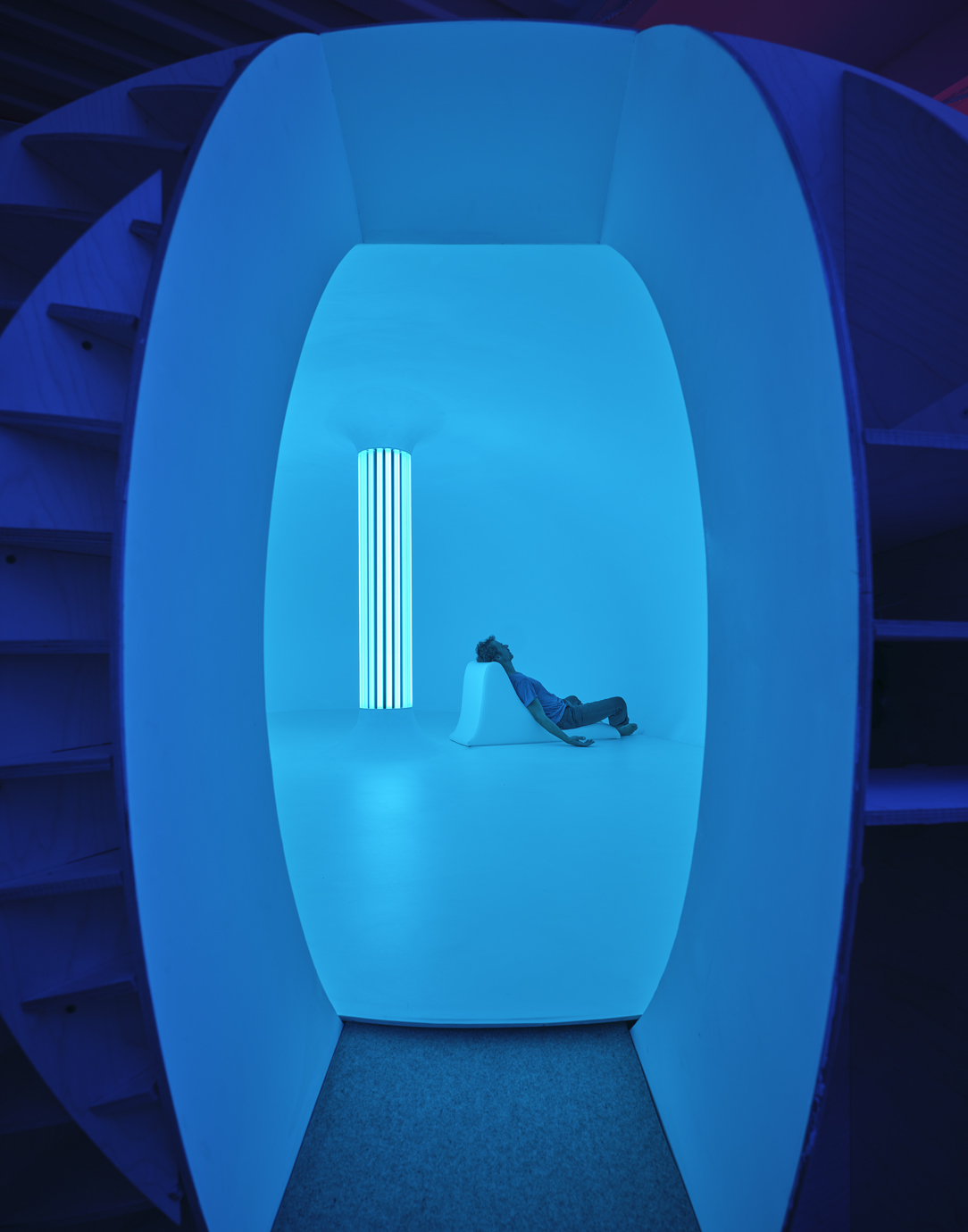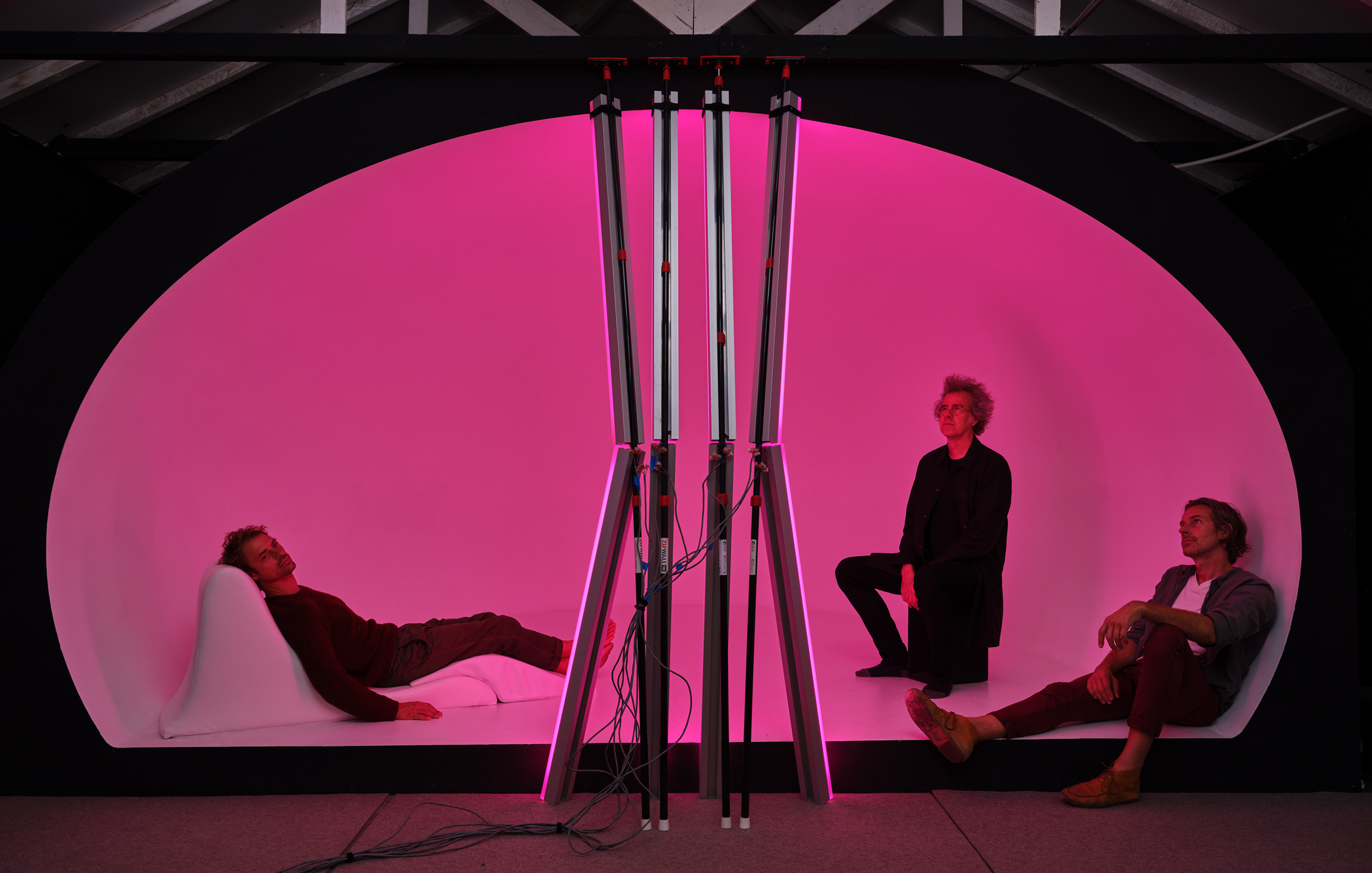
As I pull up to Chromasonic, I’m filled with gratitude that I’m not headed to some back alley at the edge of Highland Park to experience whatever latest installation everyone will be posting on Instagram. Instead, 2100 Zeno Place, just below Venice Boulevard and just far enough from the chaos of Abbot Kinney, is in the heart of the Venice artist district, and the old-school energy is inherent.
Admittedly, I haven’t done my homework when I show up. I’ve been smashed with deadlines, and all I know from briefly looking online is that Chromasonic is a light and sound experience. I arrive a bit late and somewhat flustered (deadlines—and perhaps a haircut I need to race across town for later—looming). When Johannes Girardoni, one of the artist founders of Chromasonic, asks what my current energy and stress level is, I laugh a bit. “It’s up there,” I say. “Perfect. You’ve come to the right place.”
I enter the space, an 800-square-foot windowless venue created from two shipping containers located at the front of a rather large artist warehouse where the Chromasonic team has been carefully fine-tuning their piece for the last few years. (Satellite One is the first of a series of light and sound immersions the team will debut across the world.)

I take my shoes off and am told to put my phone away. “You can Instagram later, but it’s not really the kind of thing that works on social media—you can’t photograph a feeling. Besides, one of the fundamental philosophies of Chromasonic is to detach from technology,” says Girardoni, who has been working as a sculptor and installation artist for the last two decades. “But we get that we’re also using technology to detach from it,” adds Harriet Bourne Girardoni, Chromasonic’s Director of Culture. The creative team also includes, musician, composer, and sound artist Joel Shearer and percussionist and composer Orpheo McCord.
There’s a comment card that asks me to rate my mood and expectations before entering. Then, I walk into the vessel—perhaps best described as womb-like—and the experience begins.
I’m a bit amped up on stress-fueled adrenaline, but also cognizant that if this light and sound show is too melodic, I might immediately crash and fall asleep. (It’s hard to write about a nap.) I don’t. Not even close. While never piercing, the sounds element is also never hush, and the lights are never too dim. There’s plenty going on to keep you engaged, but not so much that it’s sensory overload. This has all been carefully measured and fine-tuned.
For the first ten minutes, it’s a soothing spectrum of rotating hues of LED lights accompanying rhythmic analog and electronic sounds—think more Solaris soundtrack than Daft Punk. I’m alert and into it, but then something hits me, and I just relax. For the next 20 minutes, I’m not thinking about much. I don’t meditate (I can never be still enough for it), so I wouldn’t compare it to that, but I’ve definitely slowed down and feel calm and soothed. When it ends, I’m relaxed and centered.

I ask the team if anyone ever leaves Chromasonic with the reaction “meh,” and I’m told that that’s definitely not a thing. Bourne Girardoni reads me back a comment card from one of the 2,000 guests who have experienced Chromasonic in the first three months since it debuted in June, and it says, “My second experience was even stronger than my first. I felt a reunion with myself and voice, anchoring me back in my awareness.”
Indeed, it’s almost impossible not to enjoy or come out at least a bit more reflective. “It’s not a bliss ride for everyone, but it gives people the space to tap into whatever is waiting for them,” says Joel Shearer. “We like to call it ‘enhanced awareness,’” adds McCord. “We have found that a Chromasonic Immersion can certainly act as a catalyst to deepen one’s meditation practice.”
The thing is that you can think as hard or as little about Chromasonic as you like. At its baseline, it’s a 30-minute immersion into light and sound. But dig deeper, and you can analyze how much of it is art, where do the lines of art and technology merge, is this wellness?
The light and sound isn’t random—it’s a mathematic algorithm. I majored in art history in college and barely met the GE science requirement until my senior year when I finally passed a class called “Antarctica,” so the mechanics behind how Chromasonic works are lost on me, but Girardoni describes it to me as, “a harmonic connection that binds with artificial sensory mechanisms. We’re taking sound and making it visible. Taking light and making it audible, which creates a feedback loop between the artificial sense and the real.”
I’m not sure if I was convincing, but I nod and act like I completely understand all of that, when really, I’m just thinking about the beautiful synergy between the color and the sound. And that’s all you have to do too.
Craving more culture? Sign up to receive the Cultured newsletter, a biweekly guide to what’s new and what’s next in art, architecture, design and more.




